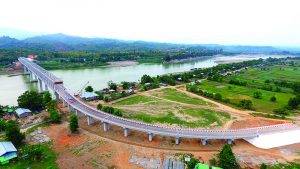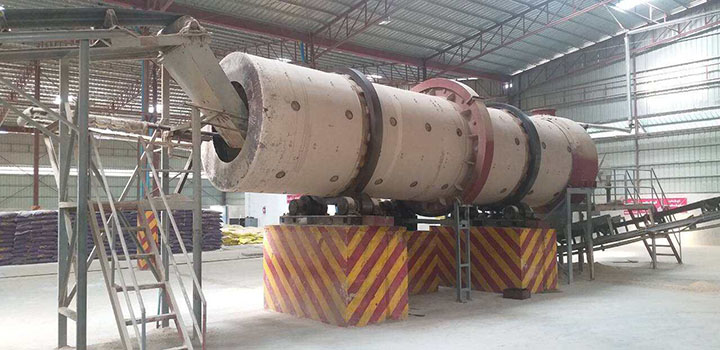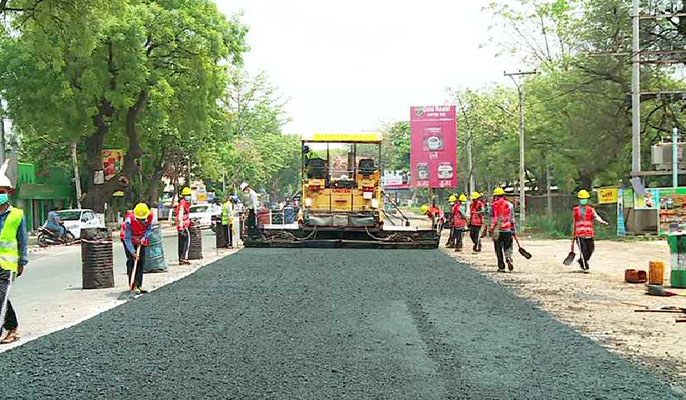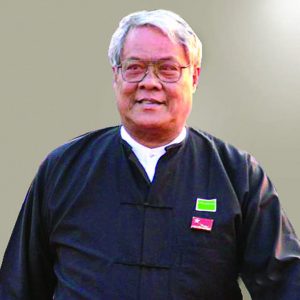Our region also won awards for installing clean public toilets in 2017 and 2018 and the ASEAN Public Standards Awards for 2019-2020.
Chief Minister of Sagaing Region, Dr. Myint Naing.
By Shin Min
Photo: Ko Ko Soe Nyunt
The Sagaing Region government follows three principles to improve the socioeconomic development of its citizens: 1) promoting the agriculture and livestock sector, 2) ensuring better transportation infrastructure and electrificsation, 3) expanding the tourism industry.
We interviewed the Chief Minister of Sagaing Region, Dr. Myint Naing, of his cabinet’s endeavors fulfilling these principles during the third year since the civilian government assumed office.
Q: Please tell us about your government’s objectives and tasks.
A: We have three principles or policies we follow in our work to raise the living standards of the people and the economy. We’ve followed them since taking up office. The three principles are developing the agriculture and livestock sector, making the basic transportation infrastructure better and increasing electric power supply, and growing the tourism sector in the region. The regional government bases its annual prioritized objectives and tasks on these three principles.

Q: Can you tell us why these sectors are given priority?
A: We’re the second largest subnational territory in the country with a population of 5.4 million people. People living in the urban areas make up 17.14% of the population while the remaining 82.85% live in rural areas. Since the agriculture and livestock sector is the main business driving the region’s economy, we need to develop it first to increase the income of the majority of our population in the rural areas which will raise their living standards in turn.
So, if we can upgrade the basic necessities such as infrastructure and electrification then we can develop the agriculture and livestock sector. This will simultaneously develop the industrial sector and trade. Development will soon follow with education, healthcare, humanitarian processes and the expand the tourism industry as the end result.
The expansive region still has its forests, mountains and rivers intact and we have cultural heritages and various unique customs and traditions of our diverse ethnic races living here. All of this is the perfect foundation to grow our tourism industry. Giving priority to them and developing them will grow our economy in all aspects and this is why they are part of our list of priority tasks.

Q: How much have you accomplished so far?
A: We’ve converted 2,641 acres of vacant and virgin lands into farmlands for those who didn’t have any to cultivate on. We’ve formed 2,225 acres of high-level farmlands and we’ve purchased 466 machine tractors and 5,806 hand tractors to transition to a mechanized farming system.
We maintain our dams, lakes and reservoirs every year and repair them if necessary. There are 43 state-owned and 290 rural ones that provide irrigation to 730,000 acres of monsoon crops and summer crops and 890,000 acres used to cultivate other crops.
We issued certificates that recognize good agricultural practices (GAP) to 44 farmers to export mangoes and melons into foreign markets. In the three-year period we have performed free vaccinations for 180,000 cattle in 11 townships once every six months. This has reduced diseases and increased livestock production.
We’ve increased fish production by 239.55 million peittha (approx. 390,466,500 kg) and 87,409,000 fingerlings from three breeding ponds. Two more bee farmers have emerged and make up the 312 bee farmers in the region.
Q: Now, tell us about how your cabinet handled improving the region’s infrastructure.
A: Well for starters, we upgraded about 3,248 miles of road over the course of three years. And we’ve constructed 50 bridges over 150 feet and 2,549 bridges under 150 feet.
The big projects we took were the three Chindwin Bridges – Kalewa, Khamti and Homalin. We also constructed the Mu Bridge (Tamayoe) and Mezar Creek Bridge.
Q: And what did your cabinet have to do for increasing the power supply and connectivity for the people?
A: We’ve converted Tamu, Mingin, Kalewa townships and 1,392 villages from the transmission line system to a converting distribution system in three years.
The number of people with access to electricity has risen to 121,652 and electric consumption has risen to 120.85 Megawatts. Out of the 5,989 villages in the region, about 88.53 per cent have access to electricity now.
We completed a small-scale hydroelectric project on Taing Kham creek in the Naga Self-administered Zone’s town of Nan Yun. We’re currently constructing a 4 MW small-scale hydroelectric project in Homalin Township as well.
The city development committees have completed 339 tasks for acquiring water, constructed 3 new markets, 8 bazaar expansions, 5 new city halls, highway terminals and upgraded old car lots.

Q: How did you manage the finances and funds for those endeavours?
A: We systematically divided our available funds for each sector and arranged for the work to be as close to the people’s wishes as possible. This was done by submitting the reports to the regional Hluttaw and getting the vote of the people’s representatives.
We allot about 58 per cent of our annual budget on infrastructure and power supply. We divide the rest on which tasks need to be prioritized based on their urgency.
Q: What have you done for the rule of law and stability in Sagaing Region?
A: There are 2,844 police officers in the region; a ratio of one officer to 1,405 civilians; who uphold the rule of law, security, stability and public services.
The police have made 7,306 arrests on illegal drugs and confiscated 85.4813g of heroin, 458.073g of opium and 6,104,484 psychotropic tablets over the course of three years.
Police have also arrested 2,115 individuals on illegal timber charges and confiscated 5,566.3375 tons of timber worth K2,462.9 million. Other cases handled by the police involve 187 counts of illegal mining and 64 counts of illegal immigration.
Q: And what about economic development and the industrial and SME sectors?
A: We have the Sagaing, Monywa, Shwebo and Kalewa economic zones in the region. We have permitted the registration of 424 new industrial enterprises in the three-year period. Currently, there are 410 large, 1,202 medium and 3,372 small enterprises in the region. We are trying our best to address their difficulties.
We have issued certificates of proof for 461 entrepreneurs and loaned out a total of K1,770 million to 59 of them. Furthermore, we helped 73 RBF Grant winners access a total of K2,360.7 million from Denmark. We’ve also held 27 workshops for MSMEs.
Q: Can you explain the policies for developing tourism in detail?
A: We’ve designated 6 travel zones in Sagaing Region and are implementing new travel destinations as well. We’ve worked hard to preserve our historical cultural heritage, install maps and guides and built 3 port bridges for tourists who come by boat to Mingun and Nwe Nyein districts.
We’ve opened a resort on Zalone Mountain and saw 200,000 pilgrims visit the mountain in 2017-2018 FY. We estimate there will be over 500,000 pilgrims this year. We’ve also implemented community-based tourism in Zalone Mountain, Nwe Nyein Township and the one in Indaung for viewing the Ayeyawady dolphins. We’ve also held rally races two years straight.
Because of all these efforts, tourism increased by 22.9 per cent in 2017 and again by 17.14 per cent in 2018. We are trying to increase it again this year too. Our region also won awards for installing clean public toilets in 2017 and 2018 and the ASEAN Public Standards Awards for 2019-2020.
Before we took up office, there were only 21 hotels in the region but that has now increased to 36 and we are looking to give licenses to 10 more this year. We’ve held regional guide courses and hotel service trainings twice each, with 714 graduates. We’re trying to get private sector funding into the tourism sector.
Q: Did your cabinet face any particularly difficult challenges in bringing investments here?
A: Our region is quite large and the infrastructure is inadequate so there were some impediments to inviting investors here. There are also various restrictions on border trade which is why our government is reducing those restrictions as much as we can to attract investors.
Q: Among your hard work for the people in the region, which tasks do you feel most satisfied with?
A: The transportation and electric power sector. The people received numerous benefits from our efforts in those two sectors. I feel satisfied with the developments in the travel and tourism sector too. But our regional government has much left to do. We will continue to try hard for our citizens.
Q: What will your government be working on in the remainder of its term?
A: We will continue acting on our three basic principles. We will continue to strive for development of MSMEs, human resources in the nation, and investments from home and abroad.
Q: Is there anything else you wish to inform the public about?
A: The government is working to the best of its ability while being free of all forms of corruption. But these tasks and projects cannot be accomplished with the strength of the government alone. We need the people and all relevant organizations and departments to join hands and collaborate with us to succeed.
(Translated by Pen Dali)


